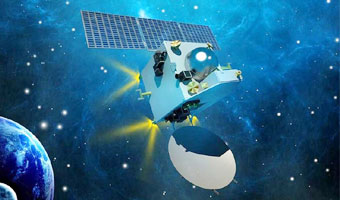
Will India be able to lose their spacecraft in orbit around Mars in his attempt to debut? The answer will be available around 8:15 am on September 24.
"We left no stone unturned to ensure that this happens," said S. Arunan, project manager, Mars Orbiter Mission (MOM), the Space Research Organisation of India (ISRO).
On Wednesday, the propulsion system of the ship, call 440 engine Newton or Liquid Apogee Motor (LAM), will erupt in life 7:17 a.m. after being inactive for 300 days during the voyage of the spaceship to the planet red.
At the same time eight 22 Newton thrusters on the spacecraft spring to life. The LAM and eight thrusters shoot together for 24 minutes to perform the most important maneuver called MOM Mars Orbit Insertion (MOI) to lower the spacecraft of India in Mars orbit with a peri-apse of 423 km and one apo-apse of 80,000 km. The move will end at 7:41 a.m. Around 8.15 am, the world will know if India is home and dry.
"Both the hardware and software simulation has been well established for the MOI. Expect no new concern for MOM cut to success," said Mr. Arunan.
ISRO wanted to ensure that the LAM go on in life after it had lain dormant for 300 days. Towards this, ISRO tested the LAM on the floor, simulating the thermodynamic conditions of the spacecraft Mars said.
A test launch of the LAM and eight small thrusters was performed simultaneously. "We have carried out this test on the operating conditions [ship] as provided for maneuver MOI. Testing was successful. Engine performance is as predicted ... So there was concern the simultaneous firing of the engine 22 and engine LAM Newton, "Mr. Arunan said.
In addition, ISRO test-fired a LAM, remained on the ground for 450 days under the same conditions as the Mars Orbiter India was experiencing in space now. "We kept in a vacuum chamber for 450 days and when we said goodbye again, his performance was absolutely as predicted," said Mr. Arunan. All tests were performed at ISRO Propulsion Complex, Mahendragiri, Tamil Nadu.
V. Kesava Raju, Mission Director, MOM said ship speed would drop on September 24 so you can get the Martian orbit.
"When the spacecraft of India is under the influence of gravity on Mars that day, reaching the closest point to Mars. At that time, our spacecraft will reach a speed of 5.7 km per second ... but we require only 4.6 kilometers per second. So the speed of the spacecraft is reduced by 1.1 km so that the ship can be contained in orbit around Mars, "said Mr. Kesava Raju.






















